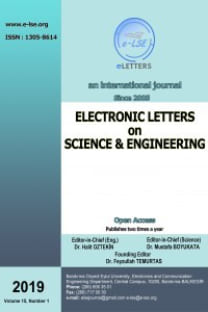THE EFFECT OF MAGNETIZATION ON X- RAY FLUORESCENCE CROSS SECTIONS
Angular Distribution, Magnetization Cross Section, XRF, X-Rays,
- ISSN: 1305-8614
- Yayın Aralığı: Yılda 2 Sayı
- Başlangıç: 2005
- Yayıncı: Fevzullah TEMURTAŞ
ELECTRICAL AND OPTICAL EXPLORATIONS OF A NEW ATMOSPHERIC PLASMA DEVICE
Erol KURT, Tolga ONCU, H. Hilal KURT
Mücella ÖZBAY KARAKUŞ, Tolga ÖNEN, Hidayet ÇETİN
ELEVATED HYALURONAN LEVELS IN PATIENTS WITH ACUTE MYOCARDIAL INFARCTION
Pınar ALTIN, Gamze Karadaş DURSUN, Göktuğ SAVAŞ, Nihat KALAY, Metin AYTEKİN
Pınar ALTIN, Gamze Karadaş DURSUN, Göktuğ SAVAŞ, Nihat KALAY, Metin AYTEKİN
RECONSTRUCTION AND PHYSICAL PROPERTIES OF MONOVANCACIES IN GRAPHENE NANORIBBONS
Mehmet Ali BAYKAL, Savaş BERBER
Murat ÇAVUŞ, Murat ŞAHAN, Turgut BAŞTUĞ
BIOSORPTION OF METHYL ORANGE DYE BY YELLOW MUSTARD SEEDS (Sinapis Alba L.)
KARBON NANOTÜPLERİN MAVİ FAZ-SIVI KRİSTALİN TERMAL STABİLİTESİ ÜZERİNE ETKİSİ
Emine KEMİKLİOĞLU, Liang-chy CHİEN
NEW METHOD FOR MOLECULAR ORIENTATION OF LIQUID CRYSTALS: PHOTOLITHOGRAPHY
